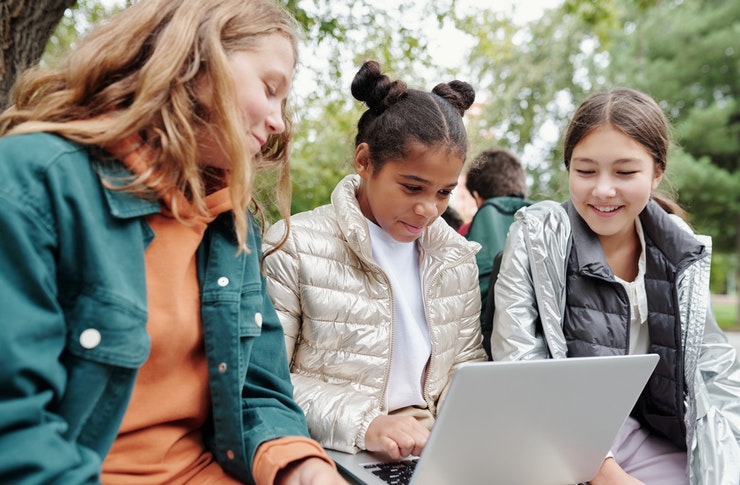Why Remote Learning Should Be Considered Even After the Pandemic
Ever since the outbreak of COVID 19, the pandemic disrupted business, industries, the economy, and most importantly, education. According to the World Bank Organization, over 1.6 million students were affected due to the sudden school closure. But, where there is a problem- there is a solution. So, online learning became the new norm.

The education sector used the power of technology and started teaching online. It increased flexibility for students, teachers as well as parents. Without a doubt, virtual learning has been challenging. It put students under mental stress, and they experienced a lack of school support.
Although online learning is fundamentally new, many students struggle to adapt to it. Internet connection remained a compelling equity issue. With that said, there are several reasons why remote learning should continue even after the pandemic has subsided.
The Eight Reasons Why Remote Learning Should Be Considered Even After the Pandemic-
Remote learning is here to stay. Although COVID 19 pandemic has considerably stimulated the rollout of distance learning, it should be continued even after the pandemic.
Here’s why.
#1. Remote Learning Gives Students A Room for Creativity-
One of the most notable benefits of remote learning is it gives students free time. They don’t have to worry about studying material and aren’t bound to commute back and forth to classes.
Therefore the few spare hours give them the room for trying out new things and exploring them. Generally, a high school student starts school at 8 in the morning. At the same time, most students have back-to-back classes with little reprieve. But with online learning, they were able to set their hours.
#2. Parents and Teachers are a Unit-
Due to remote learning, parents have been more involved in their children’s education than ever before. Due to the school format, parents help with lessons, homework, extracurricular activities, and enforce discipline. It also encourages a stronger connection between the child and the parent.
#3. It Saves Them Money-
Online learning saves money. Online courses are cheaper, and students don’t have to fly thousands of miles away from their families. With no geographic borders, it enables them flexible schedules. Moreover, online courses offer a range of policies for payments. It saves students time and money on travel and school supplies.
#4. Remote Learning Gives a Global Perspective-
Because remote learning can be anywhere in the world, students from all over the world can join and study together. It gives them a global perspective and enables cross-cultural understanding. Giving them a broad range of perspectives, it refines their critical thinking skills. They can think critically about everything that wasn’t possible in an in-person classroom setting.
#5. Students can Explore New Technical Skills-
As technology is the need of the hour, e-learning makes students become tech-savvy. They are able to utilize digital learning materials. Platforms like Canva, Quora, Virtual Learning Academy are extremely helpful.
#6. It Encourages Live Teacher and Peer Interaction-
In traditional learning, individual attention is not very likely, while in remote learning, one on one interaction is excellent. Most schools encourage live teacher and student interaction to support student well-being and maintain strong school relationships. By one-on-one interaction, students can receive education and direct outreach from a caring adult regularly.
#7. It Helps Students With Special Needs-
Did you know research shows nearly 90% of disabled individuals do not attend school? Yes, this is an alarming number! One of the primary reasons many individuals with special needs limit themselves is that commuting to schools is not feasible.
Remote learning promotes convenience to disabled students. They no longer have to travel and trouble themselves with potential issues. Speaking of convenience, all they need is an internet connection and a gadget to access all educational materials right at the comfort of their home.
#8 Remote Learning Promotes Self Discipline and Customized Learning Plan-
Unlike traditional classrooms, remote learning demands self-discipline. An individual needs to motivate themselves and set personal goals. It prompts them to dedicate time and effort to meet assignment deadlines. Additionally, one of the most focal roles of remote learning is that it is flexible. A student can enroll themselves in a single course or multiple courses at once. With online learning, customized learning enables convenience.
The Bottom Line-
The bottom line is…. the good outweighs the bad. Although remote learning has made students and teachers work even harder, the positive attributes of remote learning outweigh the downsides.
In contrast to traditional learning, where students are forced to stick to a rigid schedule, e-learning gives them the freedom to engage with, digest, and analyze course content in ways that work best for them. With the right dedication and discipline, students engaged in remote learning are set for a bright future. Therefore, with all the benefits it serves, remote learning should stay even when the pandemic is gone.
All in all, online learning opens doors of opportunities for students who have been limited by their location or by resources. Additionally, shortly, rural areas will have stronger internet connections that will open educational and career opportunities for students in every walk of life.




